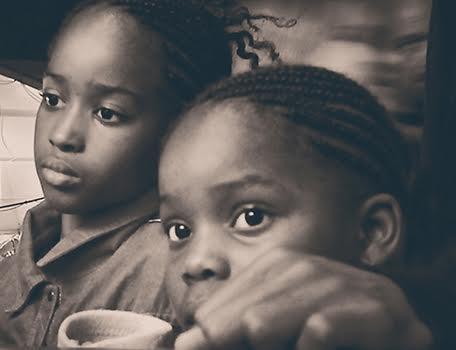
Photo credit: Eric Parker
Investing in Prevention: What Does it Look Like and Why Does it Matter?
Well over half of youth sampled in the 2011 National Survey of Children’s Exposure to Violence reported experiencing or witnessing at least one form of exposure to violence. Other reports state that as many as 2 out of 3 children in this country have been exposed to trauma and violence. Trauma exposure is unfortunately common to childhood in the United States – and even more common for children of color and children involved in child welfare systems.
Children in foster care are more likely to be exposed to multiple forms of trauma including physical and sexual abuse, neglect, domestic or community violence, trafficking and sexual exploitation. A 2011 National Child Traumatic Stress Network (NCTSN) study found that more than 70 percent of a sample of children in care experienced at least two forms of trauma. Children were also more likely to experience stressors after entering the child welfare system, including removal from their home, separation from family, loss of friends and lack of control or uncertainty about the future.
Sadly, none of us are surprised about the long list of poor outcomes that often follows exposure to early childhood trauma. The NCTSN study found that children in foster care exposed to trauma have an increased risk for mental health issues, including severe post-traumatic stress. Children impacted by trauma are also more vulnerable to dropping out of school, substance abuse and delinquency.
It’s important to note that the risk of experiencing trauma differs by race and ethnicity. Children of color are more likely to experience child maltreatment, particularly witnessing family violence, yet significantly less likely to receive treatment. This leads to differing rates of post-traumatic stress. They are also over-represented in child welfare systems and experience disparate treatment once in the system. Children of color frequently have longer out-of-home stays, more placements and different discharge patterns than peers, regardless of age or gender.
Investing in prevention is a critical strategy for preventing abuse and neglect - and exposure to violence - from occurring in the first place. Countless studies have demonstrated that prevention is worth every penny with every dollar spent on early childhood prevention programs, yielding savings of between $4 and $7. Investing in prevention translates to fewer dollars spent on foster care, welfare, juvenile justice and a host of other expensive interventions further down the road.
Given the relatively low percentage of families who receive any services at all - even when maltreatment is substantiated, we need to redouble efforts to identify and provide effective prevention services to families at high-risk for child abuse and neglect. These programs support child well-being and promote the safety and stability of families – helping to strengthen and improve parent-child relationships, reduce likelihood for abuse and promote resiliency. Prevention programs are most effective when they are multigenerational and provided in accessible, family-focused and culturally responsive ways. Multigenerational strategies provide an important opportunity to address the effects of trauma experienced by children, parents and their grandparents. A recent brief from the Center for the Study of Social Policy (CSSP), Prevent, Protect, Provide, highlights a number of these strategies. Below we highlight several additional prevention efforts that warrant a closer look.
Partnering with Families. An example of an intervention that includes partnering with parents among several components is Project DULCE (Developmental Understanding & Legal Collaboration for Everyone), which is currently being implemented in five communities with support from CSSP. Project DULCE integrates a family specialist into the primary health care team. The family specialist partners with parents of newborns – with the goals of improving child development and reducing risk of maltreatment – providing families with support for any unmet legal needs and age-related information on child development. Families meet with the DULCE family specialist at all routine pediatric visits for six months, and home visits and check-ins are scheduled depending on the families’ needs.
Also, several Maternal, Infant, Early Childhood Home Visiting (MIECHV) models, such as Nurse-Family Partnership, have been shown to improve outcomes for parents and children alike, as well as decrease the risk of child abuse and neglect. Several strategies could be used to enhance the success of home visiting programs with diverse populations. One such strategy is using local, centralized intake processes to ensure the best fit between a family’s needs and the available home visiting program models in a given community. Another strategy is to increase organizational capacity to recruit, train and use home visiting practitioners who are representative of the community they serve.
Providing Supports in Early Childhood Programs. Early childhood programs are another key prevention strategy, offering both children and parents age-appropriate education, health screening, child care and other supportive services. Georgia’s Bright from the Start program is a great example. Recognizing that Spanish-speaking Dual Language Learners (DLLs) were entering and leaving Georgia’s universal pre-K program significantly behind their English-speaking peers, the state has emphasized supporting DLLs through family engagement initiatives, providing a summer program to children from low-income homes where Spanish is the primary language as they transition to pre-K. Increasingly, child welfare stakeholders have begun to collaborate more with early childhood programs, with the aim of reaching families before child abuse and neglect happens.
Building Protective and Promotive Factors. Another critical prevention strategy is building protective factors in children and families. An example of this approach is Strengthening Families, developed by CSSP to increase family strengths, enhance child development and reduce the likelihood of child abuse and neglect. More than 30 states are currently using this framework in multiple systems, including child welfare, early childhood and others.
Federal Policy Opportunities
Several upcoming reauthorizations offer opportunities to enhance existing federal supports for prevention efforts, including the reauthorization of MIECHV - which represents the largest federal investment in home visiting programs - and the reauthorization of the Promoting Safe and Stable Families Act. Here we highlight additional opportunities to advance prevention through current policy proposals.
CAPTA Reauthorization. The enactment of the Child Abuse Prevention and Treatment Act (CAPTA) in 1974 was the first federal effort to organize, coordinate and encourage state efforts not just to recognize familial child abuse and neglect, but to prevent it. Reauthorized many times since then, CAPTA is once again due for reauthorization and policymakers are viewing it with an eye toward improving and strengthening a number of its provisions, prompted in part by recent attention brought on by a Reuters investigative series, Helpless and Hooked: the most vulnerable victims of America’s opioid epidemic. The series highlighted the failings of CAPTA’s plan of safe care – intended to protect vulnerable infants. In March, Senator Bob Casey (D-PA) introduced legislation, the Plan of Safe Care Improvement Act (S. 2687) to provide for greater oversight and accountability in the implementation of plans of safe care. The Senate HELP Committee (Health, Education, Labor & Pensions) advanced the bill, and it now awaits floor consideration. Several other bills targeting CAPTA have also been introduced in both the House and Senate.
Families First Act. The Families First Act, a proposal authored by Senators Ron Wyden (D-OR) and Orrin Hatch (R-UT), aims to reform the federal financing of child welfare services and provide for new investments in prevention, intervention and post-permanency services and supports. It addresses longstanding barriers in federal child welfare financing by providing, for the first time, targeted new investments of Title IV-E in critical services and supports for families. Still in proposal form, a bill has not yet been introduced but discussions are underway with Senate Finance Committee members and the House to generate support for the proposal.




The views and opinions expressed in this post are those of the author(s) and do not necessarily reflect those of MomsRising.org.
MomsRising.org strongly encourages our readers to post comments in response to blog posts. We value diversity of opinions and perspectives. Our goals for this space are to be educational, thought-provoking, and respectful. So we actively moderate comments and we reserve the right to edit or remove comments that undermine these goals. Thanks!